I-95/I-495/I-295 Interchange. Prince George’s County, Maryland.
WRA Geotechnical Engineers developed the subsurface investigation programs along the project and utilized the subsurface data to design the foundations for 27 bridges, more than 30 retaining walls, support of excavation, grading, shore protection, ground improvement and slope recommendations for this complex interchange. The initial phase of this project, located at the Maryland Abutment, required the first Maryland use of two-stage Mechanically Stabilized Earth retaining walls, high strength geotextiles, lightweight foamed concrete fill, wick drains, staged construction, and geotechnical instrumentation to facilitate the placement of over 40 feet of fill over soft soils with a thickness of 20 to 30 feet. The instrumentation program, which included the use of settlement plates, borehole extensometers, geotextile strain gauges and rod extensometers, monitoring wells, piezometers, and inclinometers, was utilized to control and monitor the stability of the fill placement. Additional soil improvement methods utilized along the project included lightweight fill, column supported embankments and dynamic compaction.
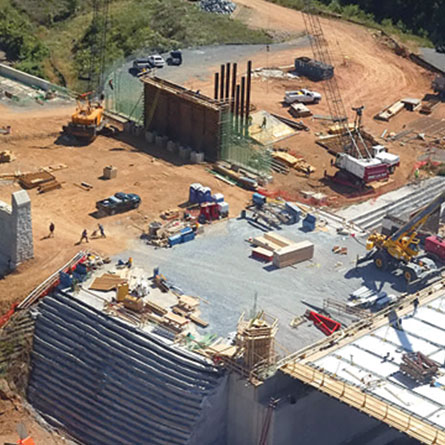
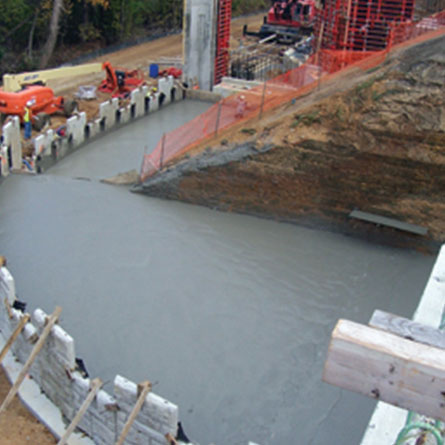
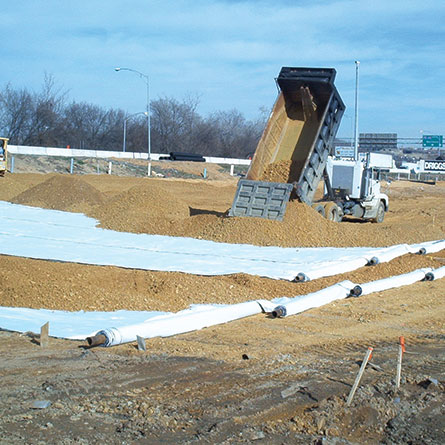
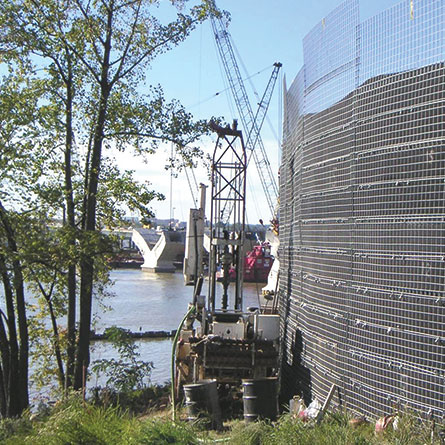
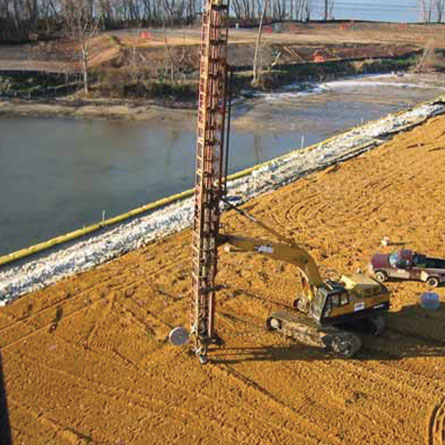
Services Performed
Project Highlights
Highways/Roadways
Roadway design included widening and reconstruction of I-95/I-495 (1.3 miles) to accommodate six highway lanes in each direction, reconstruction and widening of I-295 (0.6 miles) for three lanes in each direction and new alignments for 23 ramps (11 miles).
Traffic
Traffic design included maintenance of traffic, signing and marking, lighting, traffic signals, and intelligent transportation systems, which had to be coordinated with the phasing and adjoining contracts. Maintenance of traffic included multiple phases through multiple contracts to construct the new interchange.
Bridges
WRA designed bridges consisting of a 1433-foot ten-span continuous curved steel girder bridge, a 306-foot two-span continuous curved steel girder bridge, a 1988-foot 11-span continuous curved steel girder bridge, and six single-span pre-stressed concrete girder bridges. WRA also designed retaining walls consisting of both conventional and mechanically stabilized earth type retaining walls.
Geotechnical
WRA’s design featured wick drains, high strength geotextile, and staged construction to construct the first two-stage Mechanically Stabilized Earth Wall in the State. The design included an extensive instrumentation program to monitor soft ground stability during construction. Portions of the wall settled over 3 feet in a controlled manner that took advantage of increasing soil strength.
Water Resources
Responsible for erosion and sediment control, stormwater management, hydraulic design and staff management of multi-phase interchange contract. Coordinated interchange hydraulic design with private developer, state commissions and federal landowners.
Environmental
WRA prepared submissions for the MDE and the Chesapeake Bay Critical Areas Commission, attended meetings with MDE personnel, and was involved with obtaining state and federal environmental permits. Coordinated interchange hydraulic design with private developer, state commissions and federal landowners.
Planning
WRA participated in weekly coordination meetings that involved multiple clients, consultant engineers and managers. Worked closely with contractors during post-award in order to achieve continuity between contracts and resolve pubic environmental concerns on this highly publicized project
